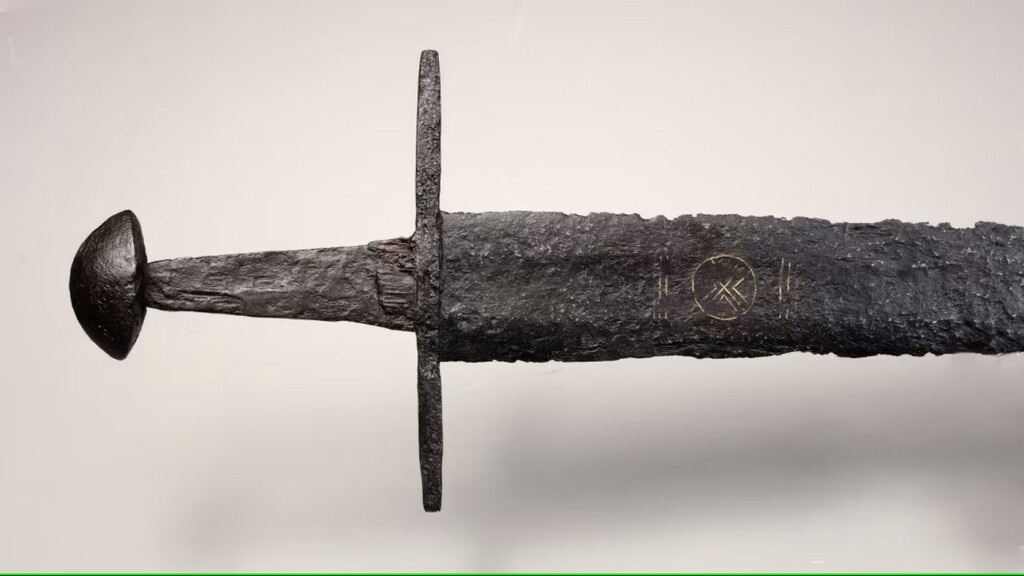
Looking as intact as the day it was forged, a 1,000-year-old sword has gone on display in the Netherlands.
Capturing a transition in medieval military technology with its expert degree of preservation as well as a dramatic culture of weapon embellishment with its series of religious symbols inlaid in copper, the sword is no doubt a national treasure.
It was found in a river on the grounds of the Linschoten Estate in the central region of the country during a routine dredging. Dating to between 1050 and 1150 CE, the sword has been donated to the Rijksmuseum van Oudheden (National Museum of Antiquities) in Leiden.
The weapon remains remarkably well-preserved after a thousand years. Only the organic components—such as the wooden grip and any leather wrappings—have succumbed to time.
It measures just over 3 feet in length and sports a cross guard and semi-circular pommel—as archetypal an image of a medieval sword as one could hope to see; the spitting image of what a sword would look like if you asked a 9-year-old boy to draw one.
Traces of the wooden hilt are still visible, however, on the preserved sword. The iron is barely corroded due to the oxygen-poor environment of the wet soil it was buried in, but it was probably forged with very high-quality iron regardless, judging by the completeness of the weapon’s silhouette. The iron was later confirmed to be Dutch in origin as well.
YOU MAY ALSO LIKE: 1,000-year-old Viking Sword Fished out of an Oxfordshire River with a Magnet
“Medieval swords were deeply personal possessions: they were either buried with their owner or—alternatively—ritually deposited into water,” said the museum in a statement. “In the latter case, they are often exceptionally well preserved.”
This era also saw a shift in military tactics and weaponry: vertical slashing from horseback gave way to horizontal thrusting between pieces of gradually growing pieces of armor.
ANOTHER SWORD IN ANOTHER RIVER: When 8-Year-old ‘Queen’ Finds Authentic Ancient Sword in a Lake, Her Fans Rally to Forge Her a Replica
This sword, which could be wielded with one hand, embodies that transitional phase—suited to both techniques.
A cross was inlaid on one side of the blade near the cross guard, and another one composed of diamonds—an icon known as the eternal knot—on the other, as well as a series of vertical lines like counting lines on both sides.
SHARE This Impressive Piece Of Dutch Metallurgy With Your Friends…
